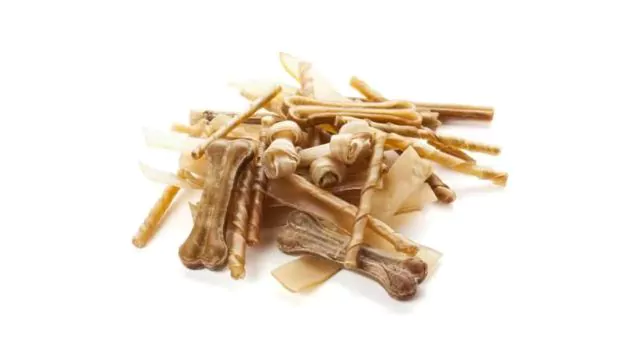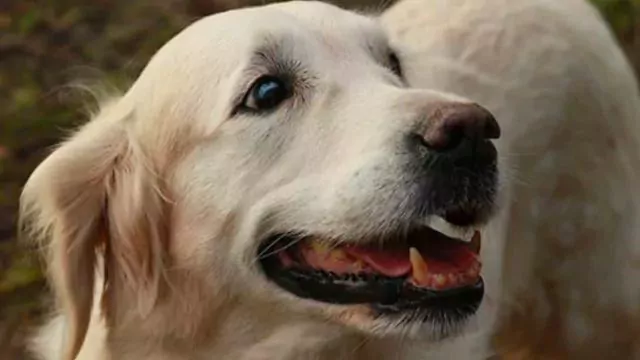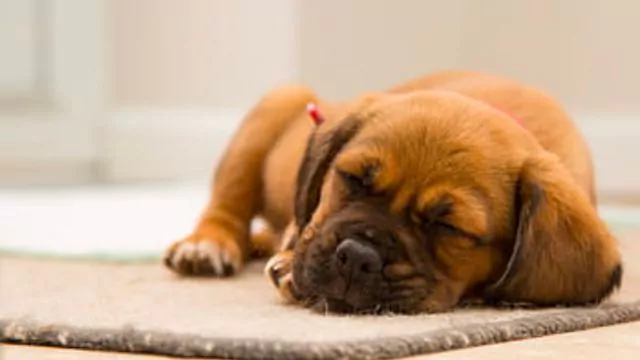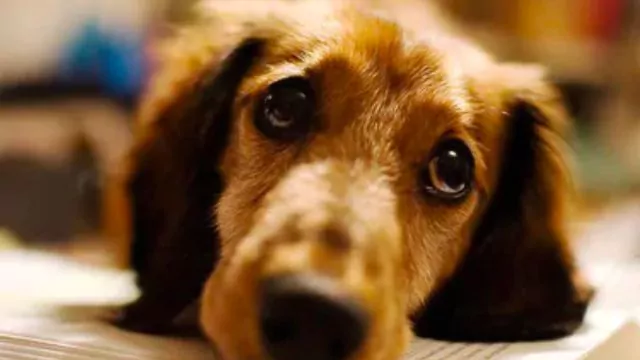Toileting for Puppies
Stan Rawlinson (Doglistener) explains toilet training techniques for pups and older dogs
Toilet Training for Puppies
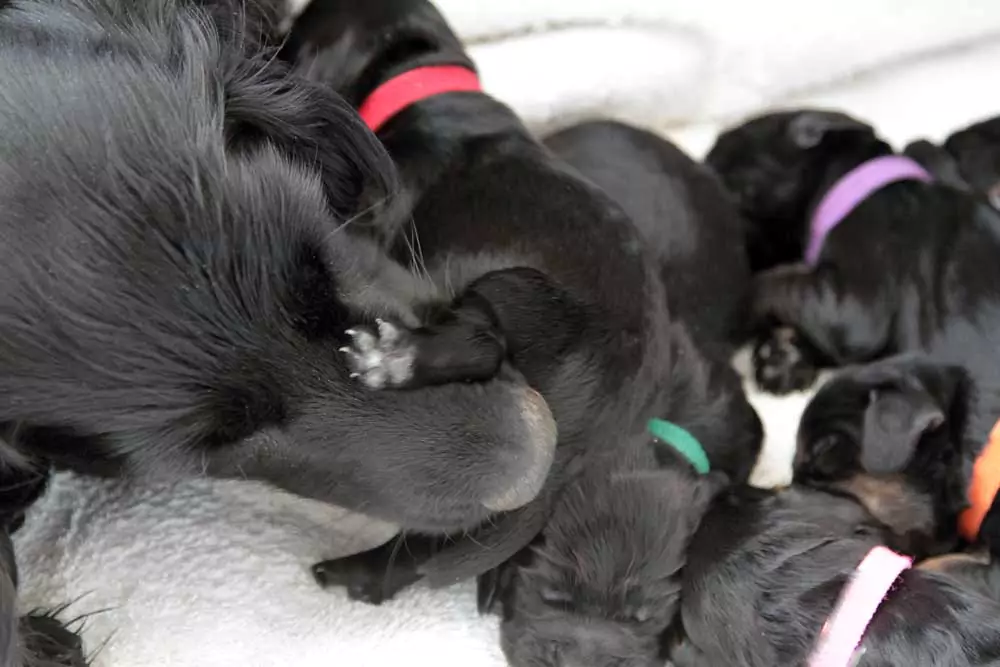
New Puppies:
At birth a newborn puppy is unable to toilet on its own, It would actually die if it was not stimulated by the mother.
Mum licks the puppies around their genital areas, this causes the pups to urinate and defecate, then she eats and drinks it, in doing so, she cleans up as she goes along
Imagine half a dozen pups defecating and urinating all at the same time.
They would end up on a pile of pee or poo that could lead to contamination and disease.
it would certainly be wet and probably cold and the bacteria could cause illness and fatalities.
The smell could also attract predators. Therefore, nature and instinct keep these young puppies safe whilst they are helpless blind and deaf.
Around three weeks of age, they begin to be able to see their surroundings and hear what it going on. It is at this time the puppies begin to soil for themselves without the need for stimulation from Mum. It is like a switch has been switched on.
At this time, the mum will still clean up after the puppies until they can scamper around. Then around three and a half weeks old, the mother begins to train them to toilet outside the nesting area. If she sees the puppy squatting, she will quite aggressively tell them off until they start to toilet outside of their sleeping and living area.
It is instinctive for dogs to avoid toileting in their sleeping and eating areas, however, this is reinforced by the mother’s actions. As the puppies become more mobile, they will move out of the nesting box to toilet.
If we were never involved or interfered with our puppies, the pup’s natural instincts plus the learning they received from their mother, would have them toilet trained by about 16 weeks, However, due to our interference many young pups become fearful or confused by our actions and behaviour.
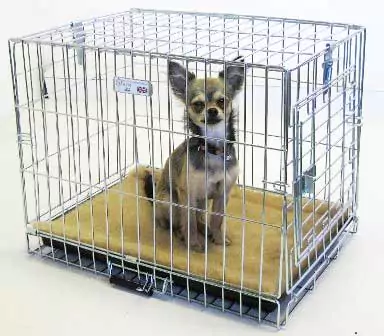
Crate Training:
Restricting your new pups movements is vital to successful early toilet training. To do this quickly and correctly then I would highly recommend Crate Training.
You could, of course, restrict the puppy by placing it into a playpen or a small room like a bathroom or laundry room.
These areas generally have lino or tiles down, that make it easier to clean up the little accidents. Having said that I believe the best way to restrict access to other places where the dog may toilet is a crate for the following reasons.
1. If you go away you can take a secure crate to keep him in.
2. If your dog is injured or needs an operation the first thing a Vet will do is put him in a crate If he has never been crate trained that will be really traumatic.
3. If your dog breaks a leg or has cruciate ligament or hip problems he will need a secure place to stay indoors when he needs rest and recuperation.
4. If you have children around and the dog needs the timeout and some peace and quiet, then a crate is ideal.
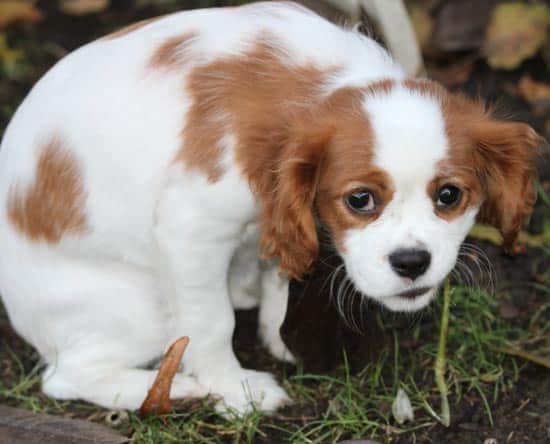
A crate is an ideal answer to most early training, and adult and puppies rest and recuperation problems.
The pup will not want to defecate or urinate in its own bed, hence the use of the crate in toilet training
However, if the puppy does manage to toilet in the wrong location, do not reprimand or show your disapproval in any way. You will not teach the puppy not to toilet in the house by doing this.
You will simply be teaching him/her not to toilet in your presence. Then when you go to the outside toilet spot, the puppy will not want to toilet because it may make you angry as it did inside
Furthermore, when you return indoors, the puppy will take the first opportunity to find an appropriate spot (your bedroom or the living room – anywhere away from his/her own sleeping and eating areas) to eliminate, when you’re not watching!
Obvious Signs Dog Wants To Toile:t
Watch for the obvious times that your puppy will need to toilet, such as 10 minutes after a meal or a big drink; upon waking up; after a play session; and any other time in between. Ensure that the puppy is in the correct toilet location at these times.
While watching your puppy in your house, you observe the pre-toileting behaviours such as sniffing, circling, etc. (it will vary from one puppy to the next), rush the puppy to the back door, keeping him/her close to floor level so that they can see where they are being taken and how to get to their correct toilet spot.
Picking up the puppy and taking it outside will not teach it where to go. The sight picture whilst being carried will confuse and disorientate the dog. Try and get a lead on and lure them outside. Sometimes a slip lead can be handy for this job as it can easily be slipped over the head./ I sell these on my website
Cleaning Up After Accidents:
Thoroughly clean the areas where the puppy has had accidents. The scent of urine or faeces indoors will stimulate a puppy to stop and toilet there. Use this fact to your advantage by collecting up any droppings and placing them in the grassy area where you would like the puppy to toilet – he/she will believe that this area is his/her chosen toilet. White vinegar is highly alkaline and can deodorise areas marked with dogs’ urine.
Stain Pre-Treatment:
Urine stains are difficult to remove because they contain organic enzymes that aren’t removed using traditional cleaning methods. Vinegar breaks down the enzymes to clean the area and remove the odours from your home.
Simply applying vinegar directly to a soiled area is ineffective for removing both the stain and the odour. Instead, you must thoroughly clean the area. Start by wiping up all of the stain using an absorbent towel. Then try an enzyme or oxygen-based stain remover and apply according to the package instructions. Don’t add vinegar until you’ve removed the stain remover.
Vinegar Treatment:
To treat the soiled area, mix 1 part white vinegar to 6 parts water in a spray bottle, then spray to thoroughly saturate the stain. Use a toothbrush or carpet brush to rub into the stain, and leave the solution on for five to 10 minutes. Then completely remove the vinegar with an absorbent towel, and clean the stain again with a stain remover to remove any excess vinegar
Feeding your puppy indoors and locating water bowls indoors will hasten the understanding that these areas are not suitable for toileting. Take the blame for any mistakes yourself – you were not paying sufficient attention. Remember, your puppy’s Mum cleaned up without scolding – attempting to reprimand the puppy for a bodily function will only create anxiety.
The puppy is not suffering from guilt when you walk into the room where the pup has had an accident – he/she simply knows that the presence of a puddle or pile and you in the same room is bad news!
When Should You Expect Improvements:
Most puppies will be showing a vast improvement by 12 weeks of age, though still having occasional accidents. Toilet training is a natural process and will happen unaided in most instances. However, there will be a wide range of ease or difficulty from one pup to the next.
Try to remain calm and accepting – your stress will be obvious to your puppy and may undermine his/her confidence and trust in you as a consistent, reliable leader, capable of taking care of their needs and providing protection.
Stan Rawlinson 2003
Updated regularly last update 2018
Reference http://pets.thenest.com/vinegar-neutralize-pet-urine-odor-4732.html
| Is your dog pulling on the Lead, Unruly, Bad Recall, Aggressive on Lead, Jumping Up? See my article and Video Clips on how to stop this. The Jingler |


